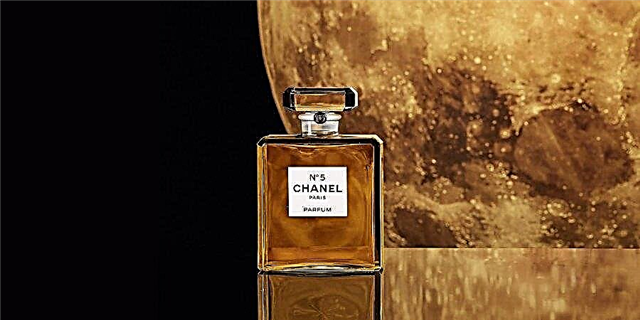A good night's sleep starts with a quality set of sheets. They protect your mattress and pillows and provide not only a feeling of comfort and coziness all night long, but also contribute to the stylish atmosphere and decor of your bedroom. However, not all sheets are the same. The choice of the right textiles for the bedroom depends on many factors - the material from which they are made, your personal preferences and habits, and of course the appearance.
Also consider the climate of where you live. In colder places, you need sheets that deliver an extra layer of warmth. At the same time, if you live in a warmer part of the country, you will be more comfortable napping on cool sheets.
There are several types of sheets that you will need in your linen closet to make the perfect bed. A flat sheet or sheet is placed directly on the mattress. A duvet cover will keep your duvet or quilt clean and give it extra softness. You can also opt for a top sheet between you and your duvet for added comfort and warmth. The top sheet also comes in handy during the warmer months if you prefer to sleep without a blanket.
The best materials for bed linen
Textile is the most important characteristic of a sheet because it defines the look of your bed linen.
Linen

Linen - one of the most popular sheets, and for good reason. Like cotton, it is a natural fiber made from flax plants from Europe. Linen bedding is incredibly durable and airy, allows your body to breathe and absorbs excess sweat. While they are ideal for year-round living, if you live in a hot and humid climate or just want to update your summer bedding, linen sheets are your choice. Another benefit of linen is that it gets softer with every wash, so your sheets will get cozier over time. Those with sensitive skin or allergies may also feel best between a set of linen sheets.
In terms of style, linen's signature lived-in look makes it the perfect choice for a home designed with a casual boho aesthetic in mind. The elegant and casual look of the fabric makes you relax, making you feel comfortable and cozy. We also recommend paying attention to the terry bedspread that you use for your bed, the appearance of the bed also matters.
Percale

Soft, breathable and luxuriously soft, percale is a fabric that fits the bill. Also known as long-staple Egyptian cotton because it grows along the Nile River in Egypt, percale really is in a league of its own when it comes to its natural qualities.
Percale sheets are for those who tend to heat up at night as they keep your body cool and the fabric is exceptionally lightweight. With extra long braces, Egyptian cotton is very durable and its texture improves with age, providing unrivaled comfort night after night.
In terms of appearance, Egyptian cotton is also one of the best bedding materials. A set of sheer matte percale sheets will bring elegance to your bedroom because the fabric does not wrinkle and retains its shape after being laid on a mattress or pillow. As a result, your bed will always look well made and commercially viable.
Satin

There is no better way to turn your bedroom into a 5-star hotel suite than with a set of satin sheets. The fabric is made from premium long-staple Egyptian cotton, but what sets it apart from percale is the unique weave that gives it its characteristic smooth texture and silky sheen.
Satin sheets are a great option for those who live in colder climates. Since it is a heavier fabric, it retains heat better, making it feel cozy and warm at night. Its smooth texture drapes well and is wrinkle resistant so you don't have to iron your sheets to achieve a flawless look. Another bonus is that satin sheets do not require special care. They are machine washable just like percale sheets.
Satin sheets are beautiful on their own, so you don't need to decorate your bed with anything else. They look incredibly chic and elegant. Show them as they are - no veil needed.
Find out more about our satin fabric in our post "Why You Should Be Cozy in Satin Bedding This Winter.
Brushed cotton

This velvety soft fabric is a real gift that never ceases to give. Although brushed cotton sheets are made from 100 percent cotton, they are incredibly soft—almost like flannel—thanks to a few extra steps: brushing and laundering. The result is the coziest sheets that will feel like you've slept on them forever from the very first night.
Combed cotton sheets retain heat better than percale, but cooler than satin. They are still incredibly breathable and airy, so are a great year-round option for those who don't necessarily identify as cold or hot sleepers.
They have a timeless look that will complement several interior styles well, from rustic and traditional to minimalist, coastal and contemporary.
How to care for sheets
In general, sheets are easy to care for as they are all machine washable and do not require dry cleaning or the use of any special detergents. Depending on the fabric the bed linen is made from, you can use cold, cool or warm water and soft liquiddetergent. Avoid using fabric softeners or dryer sheets.
These simple steps will extend the life of your sheet and make it as vibrant as when you first put it on your bed. It is also important to never use bleach, as it can damage the fabric. Another mistake is to dry sheets on high heat or at full load. (The latter will curl the bedding.) Most sheets can be ironed on low heat if necessary.

One of the most frequently asked questions is how often should sheets be washed? And while the answer will depend to some extent on several factors, a good rule of thumb is to wash bedding once a week. If you have pets at home or suffer from skin conditions or asthma, you can toss sheets in the washing machine every three or four days, or at least change them as often.
That's why it's best to have at least two clean sets of sheets on every bed at any given time. That way, even if you have a busy week and don't have time to wash your sheets, there is always a clean set you can use. Store any accessory kits in a cool, dry place away from direct sunlight as excessive sun exposure may cause discoloration.



